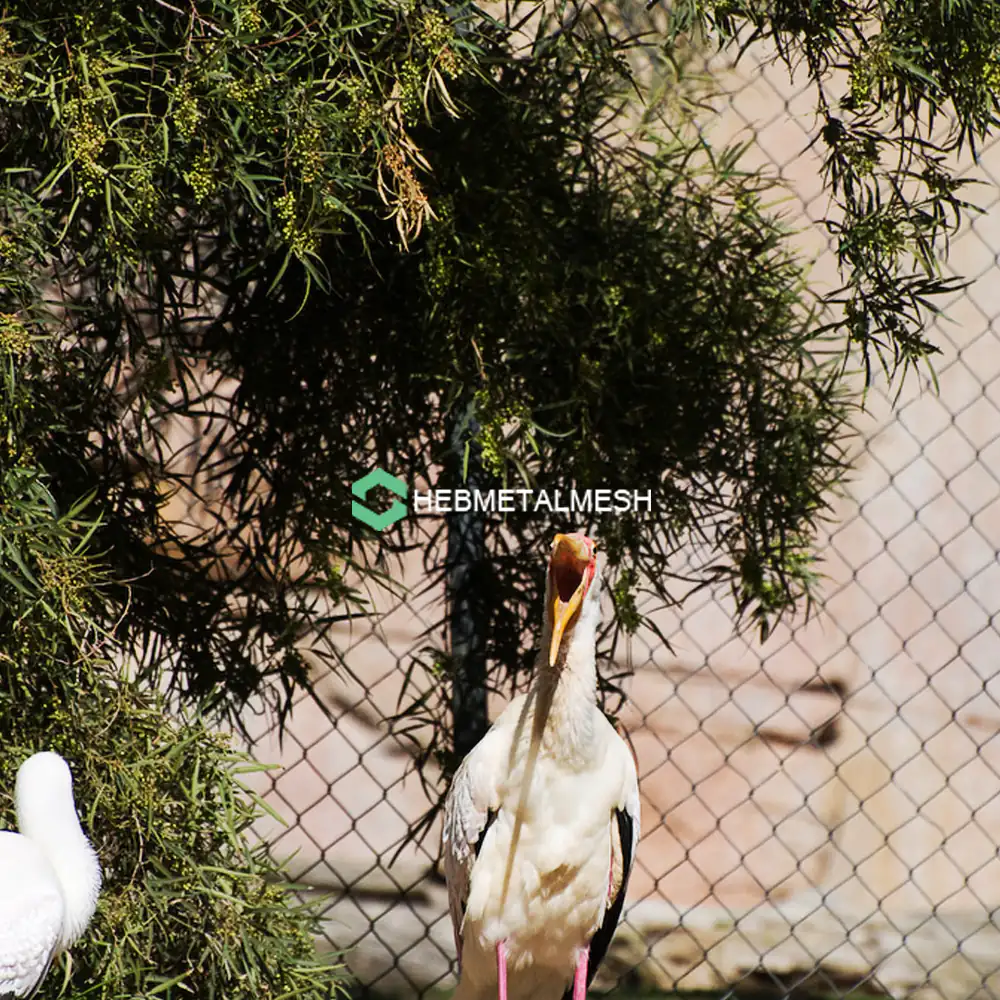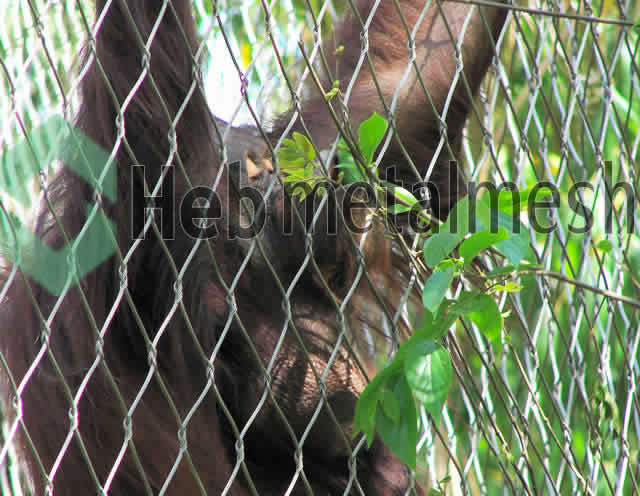The Evolution of Zoo Exhibitions
The history of zoo exhibitions dates back several centuries, evolving from mere menageries to sophisticated environments designed for both animal welfare and visitor engagement. The concept of showcasing exotic animals began as early as 2500 BC in ancient Egypt, where wild creatures were kept in enclosures for elite audiences. However, it was not until the 18th century that formal zoos began to take shape, primarily in Europe. The establishment of the London Zoo in 1828 is often regarded as a pivotal moment in the evolution of zoo exhibitions, marking a shift towards scientific approaches in animal care and display.
Throughout the 19th and 20th centuries, zoos underwent significant transformations. Innovations in design philosophy introduced more naturalistic habitats, moving away from traditional cages to open enclosures that mimic the animals’ natural environments. This shift is crucial to the creation of engaging zoo exhibitions, enabling visitors to observe animals more closely and appreciate their behaviors in settings that resemble their native habitats. Notably, this change was influenced by seminal figures in animal welfare and conservation, including Carl Hagenbeck, who pioneered the use of moats instead of bars, thus redefining the spectator’s experience.
In recent times, the focus of zoo exhibitions has expanded beyond mere display to encompass conservation education and enrichment strategies. Modern zoos aim to create immersive experiences that not only captivate visitors but also raise awareness about biodiversity and conservation efforts. Innovations such as stainless steel mesh have enhanced safety while providing unobtrusive barriers that maintain visibility, thereby enriching the visitor experience. Today, the integration of technology and design in zoo exhibitions serves both aesthetic and ethical purposes, ensuring that the needs of animals and the curiosity of visitors are harmoniously balanced.

Safety First: Designing with Animal Welfare in Mind
Designing a zoo exhibition demands a meticulous approach to safety, where the welfare of animals and the security of visitors are equally prioritized. A fundamental aspect of zoo exhibition design is the creation of secure habitats that cater to the natural behaviors and needs of the animals. This entails providing ample space, appropriate enclosure materials, and diverse environments to foster mental and physical stimulation. The materials chosen for these enclosures must not only be durable but also non-toxic, ensuring the health and safety of the inhabitants.
In addition to animal welfare, visitor safety is paramount. Designers of zoo exhibitions strive to develop barriers that effectively prevent unauthorized access to animal enclosures while allowing visitors to observe the animals without compromising their safety. The integration of transparent materials, such as stainless steel mesh, offers a perfect solution. This material provides both security and visibility, ensuring that visitors can enjoy a clear view of the animals while maintaining a safe distance.
Furthermore, guidelines and standards set by zoological associations and wildlife organizations play a critical role in shaping the layout and features of exhibits. These regulations safeguard animal welfare by stipulating minimum space requirements, enrichment provisions, and emergency protocols. Designers must incorporate these regulations into their plans to create ethically sound exhibitions that do not only meet aesthetic goals but also bear the responsibility of ensuring a nurturing environment for animals.
Ultimately, the balance between animal welfare and visitor safety is essential in the design of zoo exhibitions. By adhering to established guidelines, employing appropriate materials, and focusing on the needs of both animals and visitors, zoos can create exhibits that are not only educational and engaging but also uphold the highest safety standards.
The Magic of Stainless Steel Zoo Mesh
In recent years, stainless steel mesh has emerged as a revolutionary material in the design and construction of zoo exhibitions. Offering an array of benefits, this versatile material has transformed how both animals and visitors interact within enclosures. One of the standout features of stainless steel mesh is its remarkable durability. Unlike traditional materials that may succumb to wear and tear over time, stainless steel is resistant to corrosion, rust, and damage from various environmental factors, ensuring a long-lasting solution for zoos.
Visibility is another significant advantage of using stainless steel mesh in zoo exhibitions. The open design of the mesh allows for unobstructed views of the animals, fostering a more immersive experience for visitors. It enhances not only the visual aesthetics of the enclosures but also encourages greater appreciation and understanding of the animals. With the ability to see animals up close, visitors can engage more profoundly, ultimately enhancing their experience at the zoo exhibition.
Security and safety are paramount in zoo design; stainless steel mesh excels in these areas too. Its strength provides a secure barrier between animals and visitors, ensuring that both parties are protected. This is particularly important for larger or more aggressive species, where traditional barriers may not suffice. The mesh structure deters any attempts by animals to escape, while also preventing unauthorized contact with visitors. Furthermore, its non-toxic nature contributes to the overall well-being of the animals, as they remain within their living spaces without any risk of harmful interactions.
In summary, the integration of stainless steel mesh into zoo exhibitions marks a significant leap forward in design and functionality, enhancing the experience for both the animals and the visitors alike. With its combination of durability, visibility, and security, stainless steel mesh is undeniably a game-changer in the modern landscape of wildlife conservation and exhibition. Its contribution is immeasurable, making it an invaluable addition to any zoo’s repertoire of materials.

Cost Considerations: Budgeting Your Zoo Exhibition
Creating a successful zoo exhibition requires careful financial planning to ensure that all aspects align with the project’s goals and budgetary constraints. When examining the various costs associated with constructing a zoo exhibition, several key factors must be taken into account, including material selection, labor costs, and design complexity. Each of these elements contributes significantly to the overall financial commitment of the project.
The choice of materials for a zoo exhibition is paramount, as it influences both aesthetic appeal and the safety of the animals. One popular option is stainless steel mesh, known for its durability and corrosion resistance. While initially more expensive than alternatives, investing in high-quality materials like stainless steel mesh can lead to long-term savings by minimizing maintenance and replacement costs. Balancing quality with affordability is crucial, and seeking out reputable suppliers can help achieve this goal.
Labor costs also play a significant role in determining the overall budget for a zoo exhibition. Engaging skilled professionals may require a higher initial expenditure, but their expertise can prevent costly errors and delays in the project. It is advisable to obtain quotes from multiple labor sources and assess their qualifications before making a decision to ensure that the capabilities align with the complexity of the design.
Furthermore, the financial implications of sourcing materials through manufacturers versus middlemen are essential to evaluate. Ordering directly from manufacturers can often prove more cost-effective by eliminating additional markups that middlemen impose. Partnering with established suppliers like Hebmetalmesh not only provides access to quality materials but can also facilitate a more streamlined procurement process, ultimately reducing overhead costs.
In conclusion, budgeting for a zoo exhibition involves a strategic approach to material selection, labor, and supplier partnerships. By focusing on these areas, project managers can ensure that they allocate resources effectively while creating an engaging and safe environment for both animals and visitors.
Hebmetalmesh: Your Go-To Supplier for Quality Zoo Mesh

In the realm of zoo exhibitions, the choice of materials plays a pivotal role in the overall design and safety of enclosures. A prominent name in this sector is Hebmetalmesh, renowned for providing high-quality, customized stainless steel zoo mesh tailored to meet the specific needs of each client. With a commitment to excellence, Hebmetalmesh has established itself as a leader in the industry, making it the preferred choice for zoos across the globe.
One of the notable aspects of Hebmetalmesh is its swift delivery service. Zoos often operate on tight schedules when planning new exhibits or upgrading existing enclosures. Hebmetalmesh understands this urgency and has streamlined its processes to ensure that clients receive their orders on time, without compromising quality. This efficiency has earned them a reputation for reliability, further solidified by the satisfaction of their diverse clientele.
When it comes to pricing, Hebmetalmesh remains competitive while upholding the highest standards. They offer a range of products that cater to various budgets without sacrificing the integrity of their zoo mesh. This flexibility is particularly advantageous for institutions looking to create captivating zoo exhibitions while managing their financial resources effectively.
Stringent quality control measures are at the core of Hebmetalmesh’s operations. Each product undergoes comprehensive testing to ensure durability and safety, critical factors for zoo environments. This dedication to upholding quality is reflected in testimonials from satisfied customers. For instance, a leading zoo in Europe reported significant improvements in both the appearance and functionality of their exhibits after incorporating Hebmetalmesh products. These endorsements not only highlight successful collaborations but also reinforce the company’s status as a trusted supplier in the zoo exhibition domain.
Customization Options: Tailoring Your Zoo Design
In the realm of zoo exhibitions, customization plays a pivotal role in crafting environments that not only meet the specific needs of various animal species but also enhance visitor experience. The design of a zoo exhibition is immensely versatile and can be tailored to accommodate distinct habitats, ensuring that each species is provided with a suitable and stimulating environment. Custom stainless steel mesh, for instance, serves as a practical solution to create barriers that are durable yet unobtrusive, allowing for optimal visibility while ensuring the safety and security of both animals and visitors.
When designing a zoo exhibition, it is essential to consider the unique behavioral traits and environmental requirements of the animals on display. For larger species, such as elephants or giraffes, exhibits may require expansive spaces with high ceilings and specially designed enclosures that replicate their natural habitats. Conversely, smaller animals, like birds or reptiles, may necessitate more intricate setups that include climbing structures or underwater environments to mimic their living conditions. Custom solutions enable zoos to build these diverse habitats efficiently, ultimately contributing to the animals’ wellbeing and natural behavior.
Moreover, bespoke designs can result in immersive environments that engage visitors, deepening their appreciation for wildlife. Such tailored zoo exhibitions often incorporate thematic elements and habitat-specific landscaping, bringing to life the natural ecosystems where these animals thrive. For example, a rainforest exhibit might feature lush foliage, water features, and appropriately designed viewing areas that encourage education about conservation efforts, while simultaneously ensuring the safety of the animals. By investing in customized zoo exhibition designs, facilities can not only meet the specific needs of their animal residents but also provide a unique and memorable experience for their visitors.
Quick Delivery: The Importance of Timeliness in Exhibit Construction
The construction of a zoo exhibition involves a range of logistical elements that must be coordinated meticulously to ensure successful implementation. Timeliness in the construction phase is paramount, as delays can hinder not only the opening date of the exhibit but also the overall operational efficiency of the zoo. Timely deliveries of essential materials, such as stainless steel mesh and other structural components, play a crucial role in expediting construction processes.
A well-functioning supply chain is integral to achieving seamless construction timelines. Companies like Hebmetalmesh have a vested interest in optimizing their logistics to enable quicker setups and openings of zoo exhibitions. Their commitment to efficient supply chain management ensures that needed materials arrive promptly, thus minimizing downtime during construction. This swift delivery of materials allows zoo management to adhere to their planned schedules, facilitating the timely unveiling of new attractions that can enhance public engagement.
Moreover, when materials are delivered on schedule, zoo planners can allocate their time and resources more effectively. This has a direct influence on other logistical aspects such as marketing and promotional activities surrounding the new exhibition. With the right materials available at the right time, zoos can ensure that the innovations incorporated into their exhibitions not only meet safety standards but also meet aesthetic and functional needs that contribute to a memorable visitor experience.
In this context, the role of suppliers becomes increasingly significant. By providing high-quality materials like stainless steel mesh with a commitment to prompt delivery, they contribute to the overall sustainability and appeal of zoo exhibitions. In summary, the emphasis on timeliness in exhibit construction is an essential component for zoos aiming to meet their operational goals and enhance visitor engagement through well-planned and timely exhibitions.
The Impact of Great Design on Visitor Experience
Design plays a pivotal role in shaping the overall experience of visitors at zoo exhibitions. When well-conceived, these designs can significantly enhance education and engagement with wildlife, fostering a deeper understanding of the animals and their habitats. One of the essential elements in achieving this is the integration of interactive displays, which stimulate curiosity and encourage hands-on learning. By allowing guests to engage directly with exhibits—be it through touch screens, augmented reality, or physical interactions—zoos can create a more dynamic learning environment, making the visit memorable and impactful.
Visibility is another critical aspect of exposure in a zoo exhibition. Properly designed enclosures should optimize sightlines so that visitors can view the animals clearly without disturbing their natural behavior. The use of transparent materials like glass or stainless steel mesh enables unobstructed views while ensuring safety for both animals and guests. This transparency fosters a sense of connection between the visitor and the wildlife, enhancing empathy and respect for these creatures.
Moreover, immersive environments can transform a simple zoo exhibition into an adventure. Surrounding visitors with thematic landscaping and soundscapes replicates the natural habitats of the animals they observe, thus deepening the experience. Such immersive designs capture the imagination of guests of all ages, making them feel as though they have stepped into another world. By carefully curating the environment, zoos can compel visitors to spend more time observing and learning about various species, ultimately enriching their knowledge and awareness of wildlife conservation issues.
In conclusion, the thoughtful design of zoo exhibitions is paramount for elevating the visitor experience. Through engaging interactive displays, improved visibility, and immersive environments, zoos can create platforms that not only entertain but also educate, thereby playing a vital role in wildlife preservation and conservation awareness.
Future Trends in Zoo Exhibitions
The landscape of zoo exhibitions is undergoing a significant transformation, influenced by advancements in technology, a growing emphasis on sustainability, and evolving visitor expectations. One of the most notable trends is the integration of immersive technologies, such as augmented reality (AR) and virtual reality (VR), which allow visitors to engage with exhibits in new and exciting ways. By incorporating AR, zoos can offer a more interactive experience, where guests can learn about animal behaviors and habitats through digital overlays accessed via their devices. This not only enhances educational aspects but also makes the exhibition more stimulating for visitors of all ages.
Sustainability is becoming increasingly important in the design and operation of zoo exhibitions. Future projects are likely to prioritize eco-friendly materials and practices, ensuring that constructions, including elements like stainless steel mesh, align with conservation goals. These materials not only enhance the aesthetic appeal of exhibitions but also contribute to the overall durability and safety of animal enclosures. As eco-consciousness grows among visitors, they will expect to see transparent efforts from zoos to protect both wildlife and their habitats, further influencing design choices.
Moreover, the expectations of visitors are evolving, driving the need for more personalized experiences. With the advent of artificial intelligence (AI), zoos can analyze visitor data to curate unique experiences tailored to individual preferences and interests. AI can also facilitate improved animal welfare by monitoring their behaviors in real-time, allowing for timely interventions when needed. As zoos become more attuned to the desires of their audience, future exhibitions are likely to incorporate features that offer more tailored educational content and opportunities for interaction, transforming the overall visitor experience.
As we look towards the future, it is clear that the integration of technology, a commitment to sustainability, and a focus on visitor engagement will shape the next generation of zoo exhibitions. Continued innovation in these areas will not only enhance how exhibits are designed but also how they are experienced, ultimately fostering a greater appreciation for wildlife and conservation efforts among the public.

FAQs: Zoo Exhibition Materials & Fencing Solutions
The most reliable materials for zoo exhibition fencing include stainless steel, vinyl-coated mesh, and reinforced composite panels. These options resist corrosion, withstand harsh weather, and endure animal interactions. For enclosures housing large animals like lions or bears, handwoven stainless steel mesh is ideal. Long-tail keyword integration: When researching long-lasting fencing solutions for wildlife exhibits, prioritize materials tested for strength and animal safety.
Safety-focused zoo fencing incorporates features like anti-climb designs, smooth edges, and tamper-proof locks. Barriers are height-adjusted based on species—for example, taller fences for primates. Safety features for animal enclosures in zoos also include double barriers or moats to prevent direct contact, ensuring a secure viewing experience.
Powder-coated aluminum and stainless steel are top low-maintenance fencing options for wildlife exhibits due to rust resistance and minimal upkeep. These materials avoid frequent repairs, even in humid or rainy climates, making them cost-effective long-term solutions for zoos.
Opt for modular fencing systems, which offer scalable cost-effective fencing solutions for zoo habitats. Materials like recycled composite or welded wire mesh reduce initial costs without sacrificing durability. Partnering with suppliers specializing in custom zoo exhibition barriers can also optimize budget and functionality.
Yes! Aesthetically pleasing zoo enclosure fencing uses natural finishes like timber-look composites or rock-mimicking panels. Designs often blend with the exhibit’s theme—e.g., bamboo-style fencing for tropical habitats—while maintaining structural integrity. This approach enhances visitor immersion without compromising safety.
Absolutely. Recycled plastics, sustainably sourced timber, and non-toxic coatings are popular eco-friendly materials for sustainable zoo exhibitions. These options reduce environmental impact while meeting animal welfare standards. For energy-efficient zoo enclosure designs, pair fencing with solar-powered lighting or rainwater harvesting systems.


